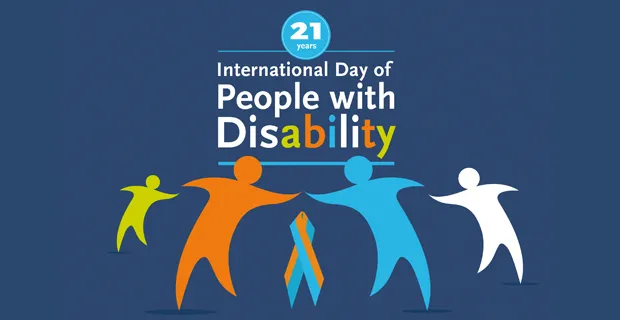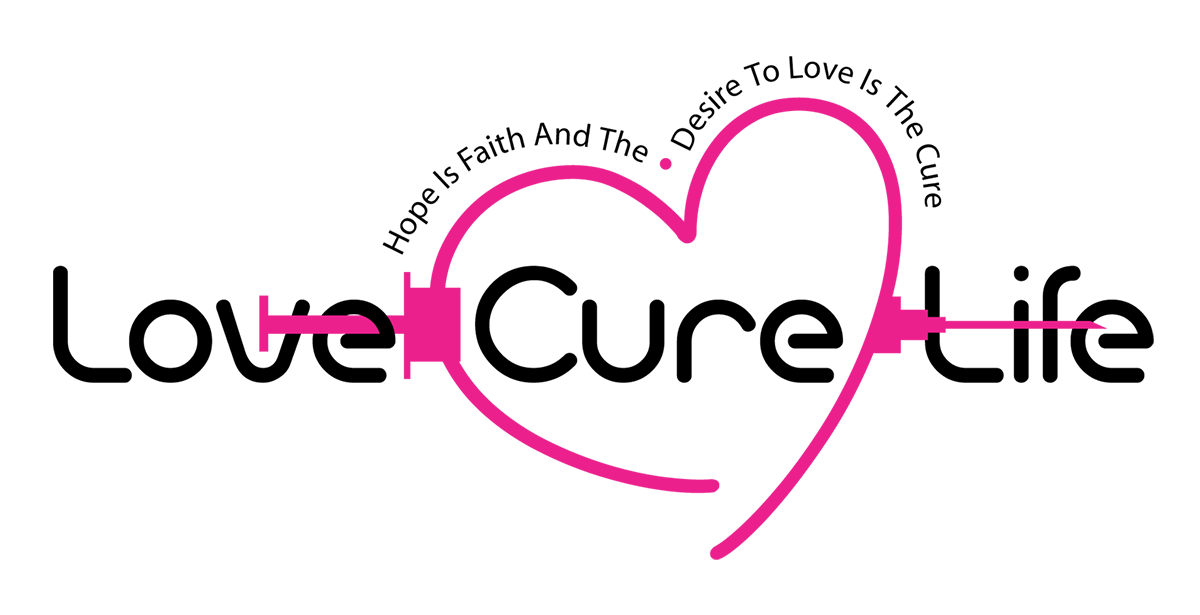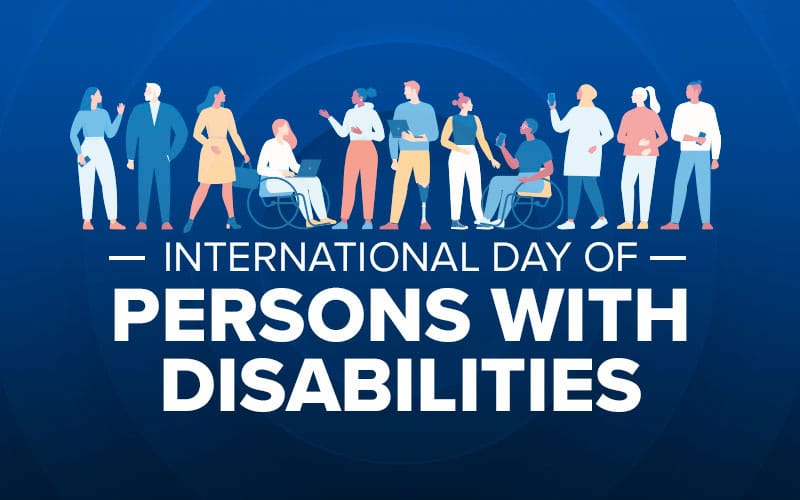Introduction
The International Day of People with Disabilities is observed worldwide on December 3rd every year. This day aims to promote the rights and well-being of people with disabilities, increase awareness about their challenges, and celebrate their achievements.
A brief overview of the International Day of People with Disabilities
The United Nations adopted this day in 1992, and it has become an essential event for disability rights movements globally. The day presents an opportunity to reflect on the issues of inclusion and accessibility for people with disabilities. It also provides a platform to address disability discrimination and challenges faced by people with disabilities.
The importance of celebrating this day
The International Day of People with Disabilities is crucial to raise awareness about disability and their rights. It promotes the creation of supportive and inclusive societies, enables individuals and communities to understand how they can help, and fosters a positive change in attitudes towards people with disabilities. It also highlights the achievements of people with disabilities and serves as a reminder of the barriers that require breaking down to achieve full participation and contribution of disabled persons worldwide.

History of International Day of People with Disabilities
Background of the international observance
The International Day of People with Disabilities is a United Nations designated day observed globally on December 3rd every year. It aims to raise awareness and promote the rights and well-being of people living with disabilities.
Key developments and milestones
The day was first observed in 1992 following the adoption of a resolution by the United Nations General Assembly. Since then, it has grown to become an essential event for the global disability rights movement, providing a platform to address disability discrimination and the challenges faced by people with disabilities.
Over the years, the day has seen significant milestones, including increased global awareness of disabilities, advances in assistive technology, and recognition of the importance of accessibility and inclusion. The day continues to be an important reminder of the work that still needs to be done to ensure full participation and contribution of disabled persons worldwide.

History of International Day of People with Disabilities
Background of the international observance
The International Day of People with Disabilities is a globally observed day designated by the United Nations. It aims to promote the well-being and rights of people with disabilities.
Key developments and milestones
Since its first observance in 1992, the day has become a crucial event for the disability rights movement. It has seen increased global awareness, advances in assistive technology, and recognition of accessibility and inclusion. However, much work is left to be done to ensure the full participation and inclusion of disabled persons worldwide.
Theme for the Year
The year’s theme to celebrate IDPD
The theme for the International Day of People with Disabilities 2021 is “Leadership and participation of persons with disabilities towards an inclusive, accessible, and sustainable post-COVID-19 world.”
The significance of the theme
This year’s theme recognizes the essential role that people with disabilities play in creating an inclusive and sustainable world. It highlights the need for their increased participation and leadership in shaping policies and programs that promote accessibility, inclusion, and sustainability in the wake of the COVID-19 pandemic.

Understanding Disabilities
Different types of disabilities
Disabilities can be categorized into physical, sensory, intellectual, and mental health conditions. Physical disabilities include impairments that affect mobility, dexterity, and coordination. Sensory disabilities include vision and hearing impairments. Intellectual disabilities affect cognitive abilities, while mental health conditions relate to emotional and psychological well-being.
Prevalence of disabilities around the world
Approximately 15% of the global population, or around one billion people, have a disability. The prevalence of disability varies across countries, with low and middle-income countries having higher rates. As populations age and chronic conditions like diabetes and obesity increase, the prevalence of disability is expected to rise. Promoting inclusivity and accessibility is crucial to ensure that people with disabilities have equal opportunities in society.

Challenging Stigma and Stereotypes
The importance of challenging prejudice and discrimination against disabled people
Disabled people often face negative attitudes and stereotypes, leading to prejudice and discrimination in various aspects of life. Such attitudes hinder their integration into society, depriving them of equal opportunities in education, employment, and other areas. It is crucial to challenge stigma and stereotypes to promote inclusivity and accessibility for all.
Ways to combat stigma and stereotypes
Increased awareness and education on disability, promoting positive representations of disabled people in the media, and promoting diverse hiring practices by companies can help challenge stigma and stereotypes. Disabled people also need equal access to social services and public spaces, including transport, education, and healthcare. By recognizing and addressing prejudices, individuals and communities can create a more inclusive and equitable society.

Empowering People with Disabilities
Creating opportunities for people with disabilities
People with disabilities have unique talents and abilities that should not be overlooked. It is important to create opportunities for them to showcase their potential. This can be achieved through inclusive hiring practices, accessible education, and community programs that provide support and resources.
Empowering people with disabilities to reach their potential
Empowerment is crucial for individuals with disabilities to reach their full potential. This can be achieved by promoting self-advocacy, providing assistive technology and resources, and creating a supportive environment that encourages independence. Empowered individuals with disabilities are better equipped to pursue their goals and contribute to society.

Inclusive Education and Employment
Challenges and strategies to ensure inclusion in these fields
Inclusive education and employment are essential for promoting equal opportunities for individuals with disabilities. However, many challenges can hinder inclusive practices. Schools and workplaces must take into account the needs of individuals with disabilities, and provide necessary support and resources.
For inclusive education, schools can provide accommodations such as assistive technology and accessible facilities. Teachers should also receive proper training to ensure they can meet the needs of all students. Inclusive employment should focus on offering accessible workplaces and job training, as well as a supportive environment that promotes equality and diversity.
Strategies can also be implemented to ensure inclusion in both education and employment. These may include partnerships with disability advocacy organizations, setting clear policies and guidelines, and providing ongoing education and awareness-raising for all stakeholders.
By overcoming challenges and implementing inclusive strategies, individuals with disabilities can participate fully in education and employment, leading to greater independence and a more diverse and inclusive society.

Community Support and Accessibility
Local support groups and programs for people with disabilities
Individuals with disabilities require the support of community groups to live independent and meaningful lives. Many non-profit organizations offer support and inclusive programs for people with disabilities, such as recreational activities, peer support, and skill-building workshops. These groups often rely on donations and volunteer assistance to provide essential services.
Accessible public spaces and transportation for people with disabilities
Accessible public spaces are crucial for the inclusion of individuals with disabilities. Public buildings, parks, and transportation must have features such as ramps, elevators, and accessible seating to ensure equal access. Governments can take steps to ensure these features are present, such as implementing regulations and offering tax incentives to businesses that prioritize accessibility.
By prioritizing community support and accessibility, society can create a more inclusive and supportive environment for individuals with disabilities, allowing them to live to their fullest potential.

Conclusion
Recap of key points
In conclusion, community support and accessibility are vital for individuals with disabilities to live fulfilling lives. Non-profit organizations offer support and programs, while accessible public spaces and transportation provide equal access. Governments can play a role in ensuring accessibility by implementing regulations and incentives for businesses. By prioritizing these elements, society can create a more inclusive environment for people with disabilities to thrive.

